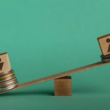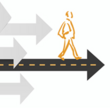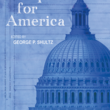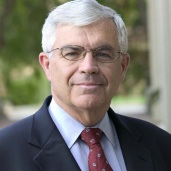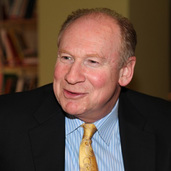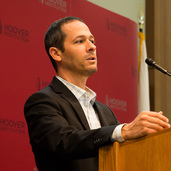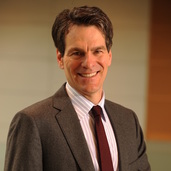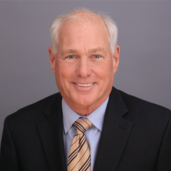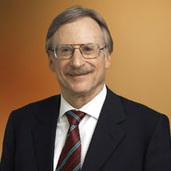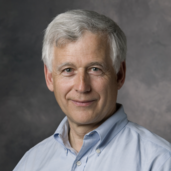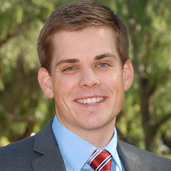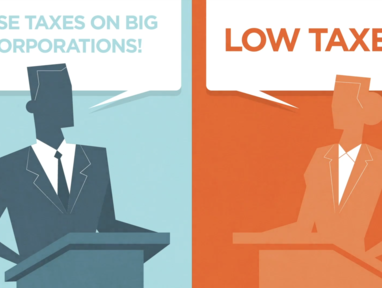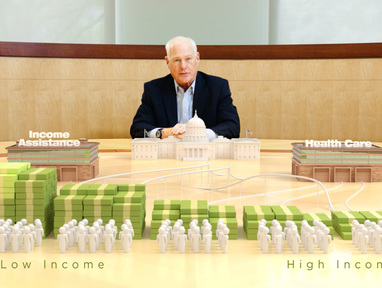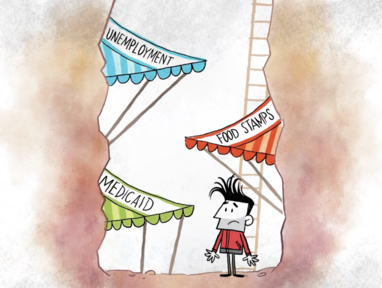Fixing Economic Inequality

The last century has witnessed incredible widespread economic gains. In the United States and across the world, there are fewer people living in poverty. Technological advancements have changed the way we work, communicate, and travel. Economic opportunities—while far from universal—are available to more people than at any previous time in human history. Despite these improvements, many see troubling developments in the modern economy, and few issues seem more disconcerting than steeply rising inequality. For many politicians, pundits, and voters, the answer is obvious: we need to raise taxes on the wealthy to expand redistribution and finance better public services.
But is their diagnosis correct? Is today’s economic inequality as grotesque and morally intolerable as they say it is? And, even more importantly, will their proposed solutions expand economic opportunity for everyone?
Is inequality rising steeply?
In recent years, there has been considerable attention paid to inequality measurements. We have heard troubling statistics about a growing divide between incomes of the top 1 percent and the bottom 99 percent. Similarly, we’ve seen statistics showing increases in wealth inequality. Are the data as dire as they seem?
New research paints a more nuanced picture. In this short post, economist John Taylor summarizes new research by economists David Splinter and Gerald Auten. These scholars find that the share of income going to the top 1 percent hasn’t changed much over the last half century after accounting for taxes, transfer income, and other sources of income that are not captured in official government income statistics. You can learn more about their research in this Hoover Working Group on Economic Policy seminar with David Splinter:
These issues are not new. Economist Lee Ohanian and Kip Hagopian highlight the many flaws in income inequality statistics:
Money income, which is the definition of income typically used in public references to inequality, consists of cash income only, does not subtract taxes, and excludes the value of noncash transfer payments (such as nutritional assistance, Medicare, Medicaid, and public housing), as well as many other components of income. In addition to transfer payments, which are a substantial portion of income at the low end of the income scale, some of the other missing components of income are: employer-provided fringe benefits (primarily retirement benefits and health insurance, which can amount to as much as 30 percent of income), capital gains, imputed rent from owner-occupied housing, and increases in the value of home equity.
These omissions mean official income equality measurements are “relatively meaningless.” Instead, to measure changes in living standards over time, we should look to consumption statistics, which better capture the extent of resources available to households. Ohanian and Hagopian find that the available research indicates that “consumption inequality is not only substantially lower than income inequality but has been declining in recent years.”
Will the proposed economic reforms help?
Inequality—even if it hasn’t grown the way we thought—may still demand action. But what should we do? A commonly suggested answer is to increase redistribution by raising taxes to finance more generous transfer programs. Just this year, several prominent US politicians proposed raising top income tax rates, taxing investment income more, and introducing new wealth taxes. The revenue from these tax hikes would go to fund new or expanded entitlement programs. The hope is that these policies will improve economic fairness and expand opportunities for more Americans.
But these hopes are unlikely to be realized. In their contribution to the Hoover Institution’s Human Prosperity Project, economist Josh Rauh and Greg Kearney consider proposals to raise tax rates on the rich. They note that most economic studies find high-income tax filers are particularly responsive to changes in their tax rates. That means that higher rates lead to significantly more tax avoidance, either through the hiring of clever accountants or by making different economic choices. For example, they point to evidence that shows tax rates affect where “star scientists” and other high-skilled workers choose to work. The result is that high tax rates discourage the productive behavior that is key to maximizing future economic opportunities for everyone. You can learn more about why tax rates matter in this video:
Would wealth taxes be any better? Rauh and Kearney find that countries that have experimented with wealth taxes rarely keep them. These countries discovered that their wealth taxes raised little additional revenue while harming their economies. Taxpayers adopted tax-avoidance strategies, moved their wealth to other countries, or otherwise changed their economic behavior. In an analysis of wealth taxes, economist John Cochrane summarizes why these taxes fail:
Wealth taxes essentially impose a heavy tax on the rate of return to savings and investment. If you consume money fast rather than invest it, you save a bundle of wealth taxes. People react to a tax on rates of return by saving less and consuming more. Over the long run, even small changes in consumption versus investment behavior result in a lot less investment capital.
Even if governments could find an efficient method to tax the rich, it isn’t clear whether efforts to redistribute income would enhance future economic opportunity. The US entitlement system spends trillions of dollars redistributing income each year, but as economist John Cogan explains in the video below, the system isn’t well targeted. Cogan points to the hundreds of billions of dollars given to people in the upper half of the income distribution each year:
Nor do large transfer programs necessarily benefit recipients. The video below highlights how poorly designed programs ultimately discourage work, forcing recipients to become more dependent on the government for their well-being.
Thus, the common solution to address inequality—more redistribution—comes with significant downsides. High taxes distort incentives to work, innovate, and invest, which are the keys to long-run economic growth and future widespread prosperity. Similarly, an expansive transfer system may create bad incentives for recipients to work and save. Is there a better solution?
How should we address economic inequality?
Finding a better approach begins with determining what type of inequality should concern us. John Cochrane argues that we shouldn’t just think about more or less inequality; instead, “We should think about the right amount of inequality, or productive vs. rent-seeking sources of inequality.” Rent seeking occurs when individuals use their political connections to receive special favors from the government. Rather than add value to society, rent seekers extract wealth from others. But should we be concerned if inequality is caused by innovators who profit from ideas that make our lives better? Preventing the latter type of inequality would make society poorer.
In the video below, economist David Henderson makes a similar case. Like Cochrane, Henderson argues that “there is indeed a distinction between good and bad inequality. Entrepreneurial innovation that improves the lives of consumers is good; using political muscle to become wealthy is bad.”
There is unquestionably bad inequality in the United States and across the world. Too many people rent seek. They become wealthy not by adding value to society but by seeking favors from the government. They convince politicians and regulators to block or limit competition, or they receive taxpayer-financed bailouts when they suffer losses. But stopping this type of inequality demands a far different response than the common solution of redistribution.
One important solution is reforming how governments regulate. In Blueprint for America, economist Michael Boskin explains how regulators are often “captured” by the very industries they are supposed to supervise. Capture leads to regulations that benefit existing firms at the expense of new firms and consumers. Boskin proposes requiring regulators to perform independent cost-benefit analyses of proposed regulations and to regularly revisit existing rules to ensure they are not burdening consumers or new businesses with costly requirements that yield little benefit to society. This video provides more details:
Occupational licensing rules stand out as a particularly egregious example of how regulations often protect existing businesses at the expense of society. These rules are supposed to protect consumers, but more often they simply prevent new entrants in the industry. The result is higher prices for consumers and fewer economic opportunities for new workers. Watch this video to learn more:
Conclusion
We should all want an economy that delivers widespread prosperity, and growing inequality may indicate that we are falling short of this goal economy. Yet, before we restructure the economy to reduce economic inequality, we must be sure that the proposed solutions will improve matters. That demands a thorough accounting of how inequality rates have changed as well as an appreciation for which types of inequality merit intervention. A failure to account for these nuances will lead to policies that undermine the economic fortunes of future generations.
Further Reading
In The Numbers Game economist Russ Roberts explores the many problems with common economic statistics that paint a negative picture the US economy. Roberts finds these measurements underestimate substantial economic gains over the last 40 years.
Widespread economic opportunity requires a strong education system. In a series of essays by leading education scholars, the Hoover Education Success Initiative identifies several needed reforms to strengthen the US education system and improve economic opportunity for future generations.

